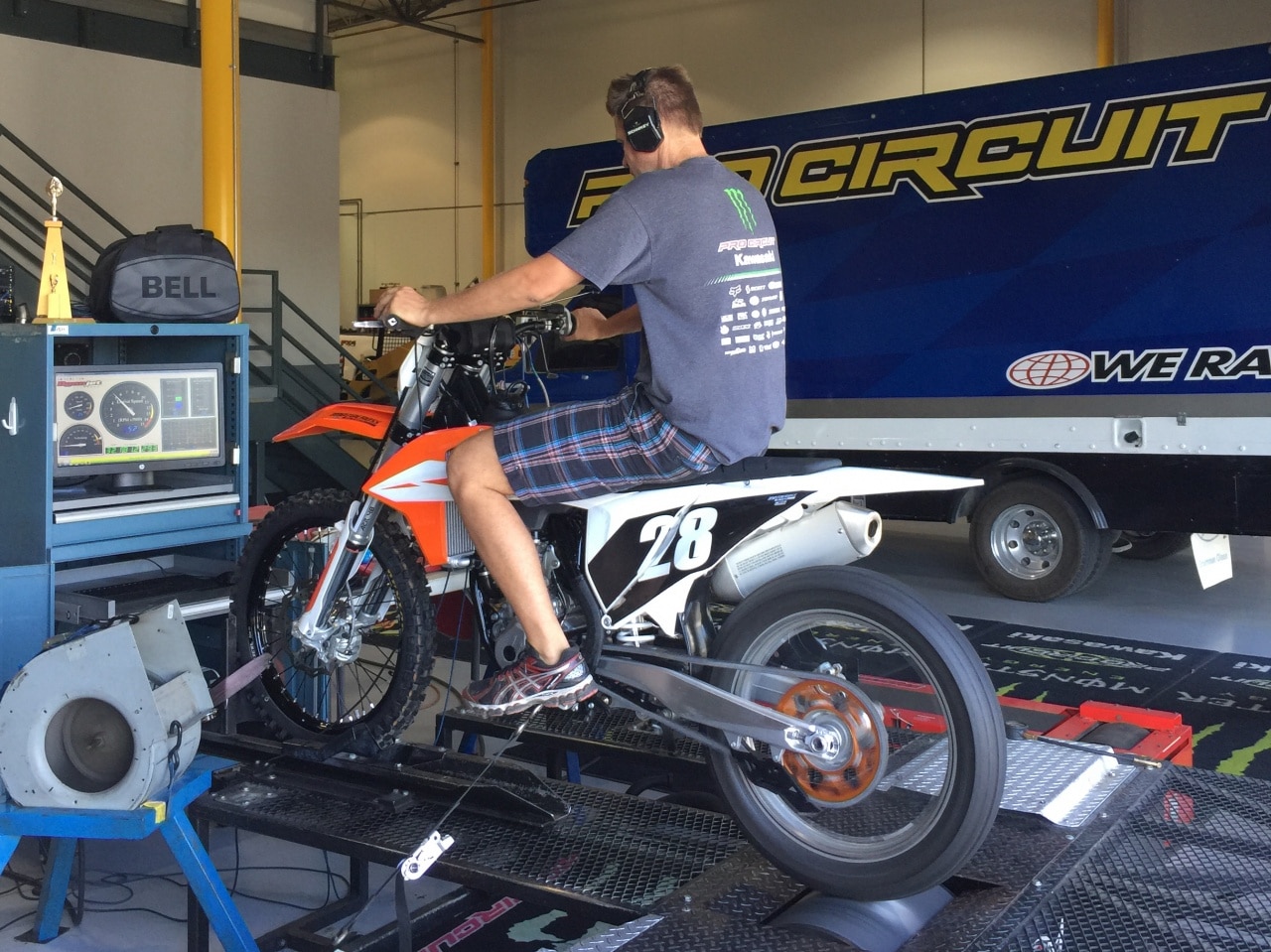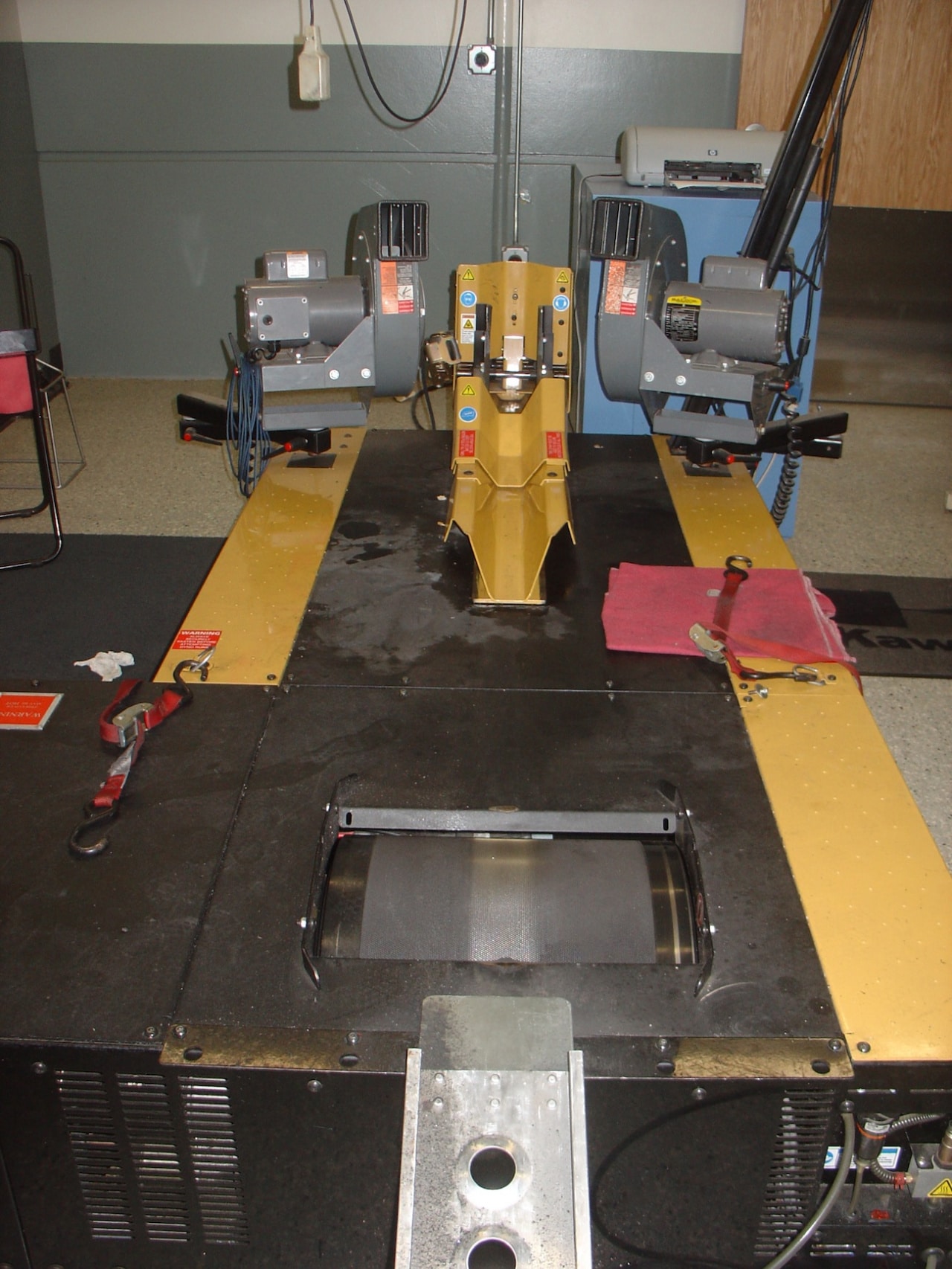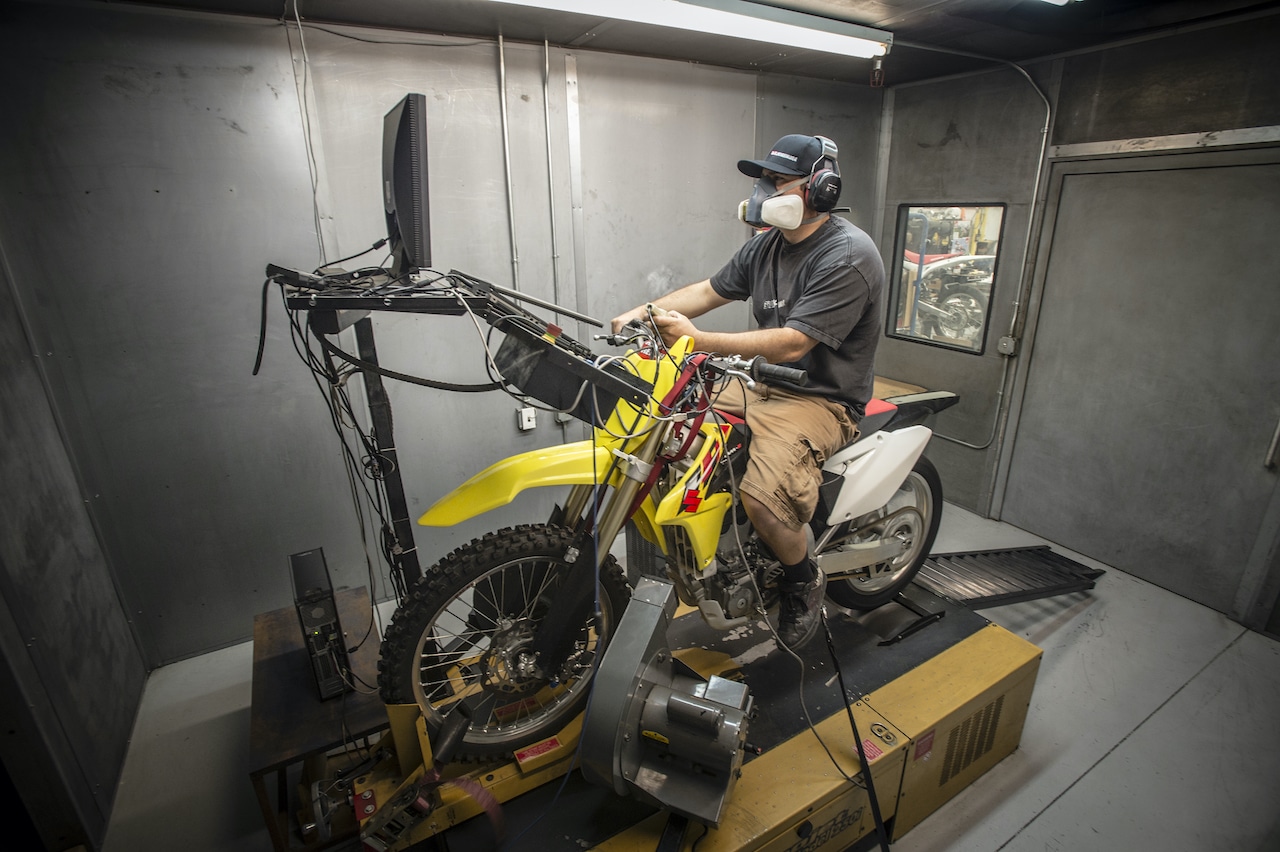LEARN HOW A DYNAMOMETER (DYNO) WORKS
 Schnike at Pro Circuit is their go-to dyno guy. He does most of the dyno work for MXA.
Schnike at Pro Circuit is their go-to dyno guy. He does most of the dyno work for MXA.
LEARN HOW A DYNAMOMETER (DYNO) WORKS
There is no more effective tool to tune and compare race engines than a dynamometer. Dynos measure the force of an engine and give the results in corrected “perfect condition” figures. This allows the engine builder to compare uniform results on a day-to-day basis under fluctuating temperature, air humidity and barometric pressure (these conditions have a correlating effect on the amount of power an engine can produce). Performance shops use dynos to immediately test just-released bikes or new, untried mods and compare the results directly against best and worst power curves from past and present. Dynamometers take much of the guesswork out of engine tuning before ever setting a wheel on the track. Top tuners spend an equal amount of time on the dyno as they do testing on the track.
WAYS POWER IS MEASURED
Conceptually, nothing could be simpler than a dynamometer. It measures the force of an engine and factors that information into given units of measurement. The knowns are that one horsepower is equal to the force required to raise a 550-pound weight at the velocity of one foot in one second. Torque is a foot-pounds measurement of the effectiveness (leverage) of the force that creates rotation. By applying a rotating resistance to an engine and reading how quick and how fast the constraint is turned in comparison to how fast and quick the engine is turning, power and torque output can be accurately recorded.
 A dyno without the bike on it.
A dyno without the bike on it.
FROM THE REAR WHEEL
Inertia dynamometers, like a Dynojet, are easy to use and very popular. The front wheel of the motorcycle fits into an adjustable chalk and the rear wheel powers a 900-pound, inertia drum. Horsepower is calculated by deriving force through multiplying drum acceleration by drum mass and velocity by the time it takes to rotate the inertia drum one turn. Torque is figured by multiplying the measured force at any given moment by the drum radius, proportioned by the ratio of the engine to drum speed. The Dynojet takes horsepower and torque readings every 200 rpm. Inertia dynamometers necessitate that the tuner sits on the motorcycle during operation. Results are most consistent if the bike is measured by performing a roll-on test in the upper gears.
One advantage of the Dynojet is that the bike can be taken straight off the dyno, and if surroundings permit, run through the gears out in the parking lot and then propped right back atop the dyno again.
FROM THE COUNTERSHAFT
Waterbrake dynamometers, like the SuperFlow, are highly automated. The motorcycle clamps to an engine cradle stand and drives the waterbrake through the countershaft. The waterbrake uses a concealed impeller and a controlled volume of water to correlate resistance directly against engine rpm. The waterbrake pivots on the driven impeller shaft and is secured against rotation with a wire-like, strain-gauge bridge. Foot pounds of torque are calculated directly by how far the strain-gauge bridge is displaced; factoring both rpm and waterbrake resistance into the equation. Horsepower is mathematically derived by converting torque to kilowatts to horsepower. The SuperFlow takes horsepower and torque readings every 100 rpm.
Since waterbrake dynamometers read horsepower and force by applying an increasing resistance against the engine, the engine is worked harder during a complete reading than on an inertia dyno. It is thus necessary to richen the needle circuit to offset the heavy load.
 Jody and Schnike looking at the results of a dyno run on the 2019 KTM 450SXF.
Jody and Schnike looking at the results of a dyno run on the 2019 KTM 450SXF.
THE DYNO ROOM
Dynamometers reside in well-ventilated, soundproof rooms with a plume to supply a generous quantity of fresh air. Since the bike is standing still it is necessary to use shop fans to blow air through the radiators. The tail end of the motorcycle is hooked to either a fan-controlled exhaust tube or backed up against a filtered and fan-controlled exhaust vent; both sucking fumes out of the room and out the top of the roof.
The most important thing to remember about a dyno is that it is only comparable to itself. And, only on days with the same temperature, humidity, and barometric pressure. Just cause one dyno claims 45 horsepower and another claims 43 doesn’t mean that one is right and the other is wrong. Dyno numbers are greater on cold days than warms days. And unless the two dynos are going to race, it doesn’t matter what the horsepower is, only what difference a given dyno can measure between different pipes, port jobs, jetting, carbs or ignitions. Dynos are for comparison—and nothing more.
 The data that is shown on the computer from the dyno.
The data that is shown on the computer from the dyno.
 Yamaha’s Dan Rambert has always been a race mechanic, but his nickname is “Dyno Dan.” He is the engine tuner over at the factory Yamaha team. Guessing he knows a thing or two about using a dyno.
Yamaha’s Dan Rambert has always been a race mechanic, but his nickname is “Dyno Dan.” He is the engine tuner over at the factory Yamaha team. Guessing he knows a thing or two about using a dyno.







Comments are closed.